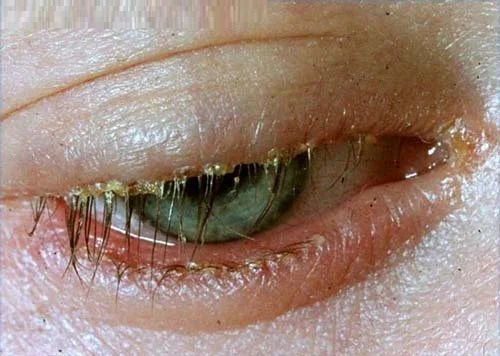Blepharitis
Blepharitis is a condition characterised by chronic inflammation of the eyelid margin.
It is very common and some people are more symptomatic than others. It is caused by an overgrowth of bacteria which break down the natural oils around the eyelids causing inflammation.
Anterior blepharitis affects the base of the eyelashes whilst posterior blepharitis affects the oily glands (Meibomian glands), which are just behind the eyelashes. Blepharitis is not contageous.
Symptoms
There is a often a sandy or itchy feeling of the eyes, especially in the morning. Redness of the eyelid edge is very common as are crusting, crusty deposits or discharge. It is more common in people who have eczema or rosacea.
The aim of the treatment is to improve the function of the eyelid glands and settle down the inflammation. Blepharitis is a chronic condition which can not be completely cured, but can be managed. Ongoing treatment is often required to minimise flare ups. If it has been present for a long time, permanent damage to the oil glands may cause long term symptoms.
Treatment
Hot Compress
Dip a clean face cloth in warm tap water (ensure that it is not hot enough to burn you). Hold it over both closed eyelids until the face cloth starts to cool. Repeat as necessary, ensuring heat is applied for about 5 minutes. You can use commercially available eye heat packs, following heating instructions on the packaging. Repeat once or twice a day or as instructed by your ophthalmologist.
Cleaning the eyelid margins
Using ‘Lid care’ or ‘Sterilid’ dip a cotton bud into the solution and rub along the eye lashes to clean away the crusting and discharge. Clean both the upper and lower eyelids and be very gentle to ensure that you don’t scratch the surface of your eye. Repeat twice a day or as instructed by your ophthalmologist.
Applying ointments and drops
After cleaning the eyelids, rub the ointment(s) into the eyelid margins with a clean finger. Instil lubricating eye drops throughout the day to relieve the irritation. To instil eye drops, tilt your head back and pull down the lower lid. Hold the bottle 2cm away from lids and squeeze 1 drop into the eye.
Omega-3 Supplements
These supplements can help improve the tear dysfunction. They should be taken as prescribed by your ophthalmologist.
Blepharitis treatments & procedures
For more severe cases, Blephasteam and Meibomian gland probing are two procedures performed by our team .
Blephasteam involves wearing a pair of goggles that use steam to gently warm the eyes over a 20 minute period. This melts congealed oil in the Meibomian glands, enabling the clinician to then massage and squeeze out the debris, cleaning the glands. Most patients will required 2-3 treatments to start with, then as needed.
Meibomian gland probing involves using a fine gauge probe to clear out each individual Meibomian gland along the upper and lower eyelids. The procedure is performed by the ophthalmologist under a microscope, with a local anaesthetic. After the procedure, patients will resume the conventional treatment options described above.
For more severe cases of blepharitis, prescription medication is often required.
Download this information: Blepharitis (pdf)



